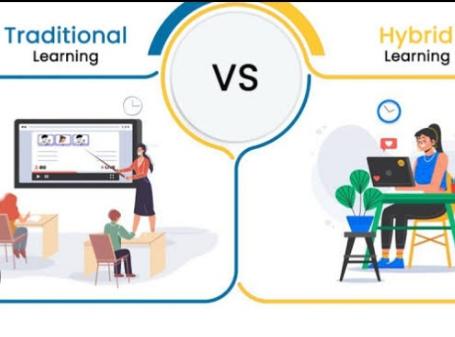Student Village Academy › Forums › GENERAL DISCUSSIONS › Traditional learning vs online learning – The Future of Education
- This topic has 0 replies, 1 voice, and was last updated 1 year, 4 months ago by
 Jimoh Eyitayo.
Jimoh Eyitayo.
-
AuthorPosts
-
-
August 5, 2024 at 2:34 PM #70668
 Jimoh EyitayoParticipant
Jimoh EyitayoParticipantTraditional learning involves attending in-person classes with teachers and classmates, while online schooling takes place over the Internet through virtual classrooms and online resources.

The online education market is growing significantly due to several key factors;
First, macroeconomic trends such as increased global technology adoption and widespread internet connectivity have made online education more accessible.
The pandemic has further accelerated accessibility, leading to the spread of online education platforms. There is also a growing demand for continuous learning and upskilling across various industries.Online learning growth isn’t only dictated by the macroeconomy. Customers, particularly working professionals, turn to online education for its convenience and availability.
They can gain new skills at their own pace and in their free time, not restrained by traditional learning schedules. Even regular students, in fact, 42% of them, state that convenience was their main motivator.Contemporary learners face a decision:
should they pursue the conventional path of education or embrace the flexibility of online learning?
This comparative analysis aims to unpack the key advantages and disadvantages of online and traditional learning to provide a clear picture for informed decision-making.
Flexibility and accessibility
Online learning offers unmatched flexibility.With an internet connection, students can access course materials and lectures anytime, anywhere, and revisit them whenever they need clarification or additional study time.
This accessibility breaks down geographical barriers and opens doors to a diverse range of learners who might otherwise have limited access to traditional learning opportunities. Additionally, online learning platforms often offer a more comprehensive range of courses compared to traditional institutions, catering to more specialized interests or niche fields.
In contrast, traditional classroom learning presents limited flexibility. It follows a structured approach, requiring students to attend classes physically at specific locations and times. While this can foster a sense of routine and discipline, it may be challenging for individuals with work, family, or work schedules. In traditional learning, access to learning materials might be limited, and missing a class puts students behind. Additionally, this format is less accessible for those far from educational institutions.Learner interaction and engagement
Virtual classrooms facilitate asynchronous communication and enable students to actively participate in discussion forums, breakout rooms, and collaborative projects. However, the lack of real-time face-to-face interaction makes building rapport with classmates more challenging. Regarding engagement, online learning platforms can incorporate engaging multimedia elements like videos, simulations, and gamification. On the other hand, it requires a high degree of self-discipline and time management skills.
Traditional learning excels in providing direct interaction between students and instructors. The physical classroom environment facilitates dynamic discussions, hands-on learning experiences, and instant feedback, fostering a sense of community and enhancing social skills. However, passive lectures or repetitive exercises can disengage students, and larger class sizes result in not all students participating.
Learning pace and self-disciplineOnline learning allows learners to set their own pace and study without distractions. However, this flexibility can be a double-edged sword.
It is advantageous for self-motivated learners, but procrastination and poor time management can lead learners to fall behind.
The curriculum and class schedule determine the pace in a traditional learning setting. This structured approach can benefit students who prefer a fixed timeline and need external motivation. On the other hand, some learners may find the pace too slow, while others might struggle to keep up.
Learning materials and resources
E-learning platforms employ diverse multimedia resources, such as interactive quizzes, videos, and simulations, to enhance the learning experience. These dynamic materials cater to various learning styles, making the educational process more engaging and interactive. Students can access diverse educational options, such as specialized subjects, that might not be available in their local institutions.
Traditional learning relies heavily on physical textbooks, classroom lectures, and written assignments. While these resources may be valuable, they lack the interactive elements. Traditional educational institutions have limited course offerings, especially in specialized or emerging fields, making it hard to pursue specific interests.
Learning environmentOnline learning provides a flexible and customizable environment where students can choose their study space and tailor it to suit their preferences.
Learning in familiar and comfortable surroundings enhances their concentration and focus. However, this environment can be susceptible to distractions at home or work.
Traditional learning occurs in classrooms with fixed settings and limited personalization options.
Both traditional and online learning have their pros and cons, and the best option depends on the individual needs and preferences of the student. Some may thrive in a traditional classroom setting, while others may prefer the flexibility of online schooling. Ultimately, both options can provide quality education and help students reach their academic goals
-
-
AuthorPosts
- You must be logged in to reply to this topic.

